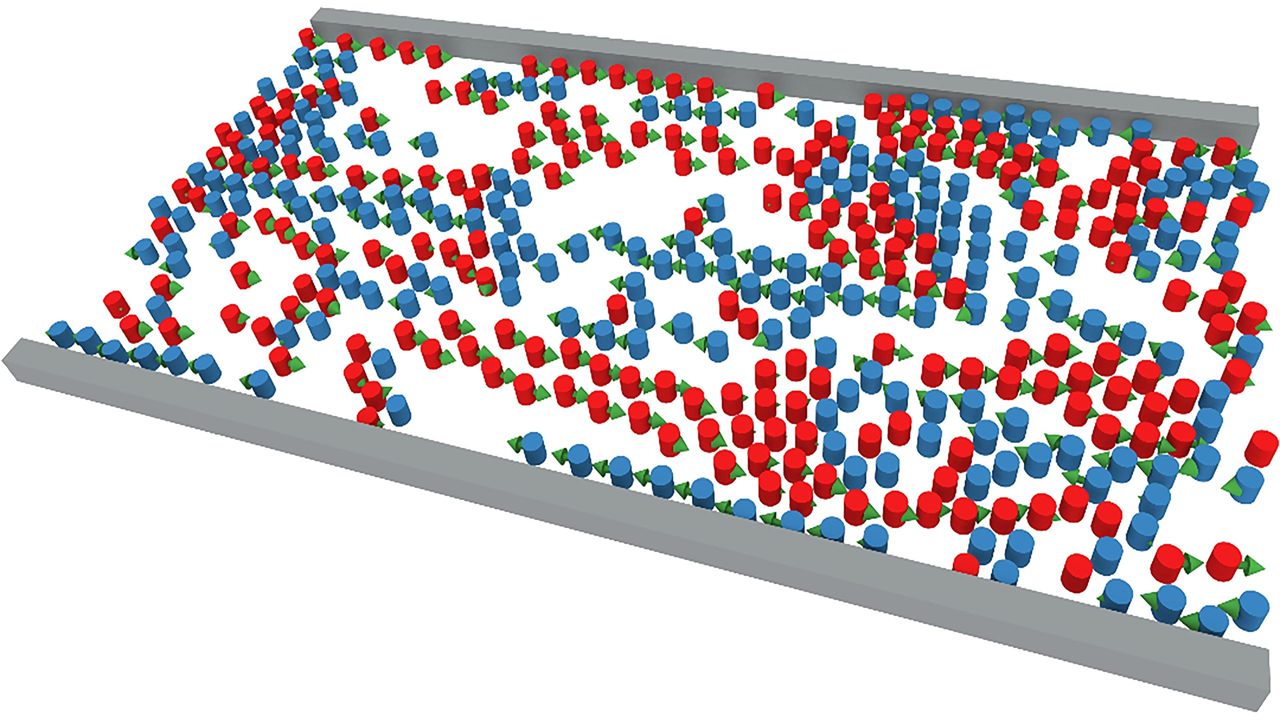How COVID-19 Social Distancing Creates Pedestrian “Traffic Jams”
0 View
Share this Video
- Publish Date:
- 23 October, 2021
- Category:
- Covid
- Video License
- Standard License
- Imported From:
- Youtube
Tags

Simulation of a counter-current of pedestrians (red and blue particles, with green arrows indicating the instantaneous speed) trapped in a corridor (grey boundary), under conditions of weak social distancing. Credit: Gerald J. Wang
Applying a “one-size-fits-all” policy recommendation to a complicated public sphere.
Along with the use of face masks, social distancing in public remains one of the most widely used first-line defenses against the spread of COVID-19. However, pedestrian flows, including those that apply the 6-foot rule of distance, are dynamic and characterized by nuances that are not always carefully considered in the context of everyday, public spaces.
In Physics of Fluids, by AIP Publishing, researchers at Carnegie Mellon University examine the dynamics of social distancing practices through the lens of particle-based flow simulations. The study models social distance as the distance at which particles, representing pedestrians, repel fellow particles.
“Even at modest pedestrian density, a strong preference for 2 meters of social distancing can create large-scale ‘traffic jams’ for pedestrians that take a long time to clear,” said Gerald J. Wang of Carnegie Mellon University. “This is pretty obvious to all of us who have spent the past 18 months engaged in that ‘awkward dance of social distancing’ in a supermarket aisle, but it has important implications for how we set occupancy thresholds as workplaces, campuses and entertainment venues turn. back to pre-pandemic densities.”
Motivated by the pandemic, the researchers shed light on the relationship between social distancing and the dynamics of pedestrian flows in corridors by illustrating how adherence to social distancing protocols affects the two-way movement of pedestrians in a shared space. The results contribute to a significant body of recent work on the effects of various factors on pedestrian reverse currents and focus on the characterization of disturbance phenomena in relatively narrow corridors, a topic of current interest.
“Dense pedestrian flows plus social distancing recommendations are a recipe for a lot of frustration,” Wang said. “I mean this both in the physical sense of the word ‘frustration’, with low particle mobility because a lot of ‘things’ seem to get in their way, and in the everyday sense of the word ‘frustration’, where people feel nervous because , well, a lot of ‘things’ seem to get in their way!”
Wang noted that public health messages should be aligned with realistic, achievable behavior, adding that “strict social distancing – a la ‘the 6-foot rule’ – is simply not a practical recommendation in pedestrian flows with densities typical of large populations.” , shared locations.”
While conceptually easy to digest, the findings underscore the complications of applying a “one-size-fits-all” policy recommendation to a public sphere characterized by nuanced dynamics of pedestrian flows.
“Particle-based flow simulation, enabled by high-performance computing, has enormous potential to quickly investigate a wide variety of pedestrian flow problems, both during the pandemic and beyond,” said study co-author Kelby B. Kramer.
Reference: “Social distancing slows steady dynamics in pedestrian flows” by Kelby B. Kramer and Gerald J. Wang, Oct. 19, 2021, Physics of Fluids.
DOI: 10.1063/5.0062331










